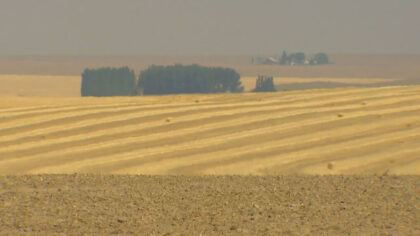A Discussion of The Rising Prices of Turf Seed in 2021
 The summer of 2021 has been record-breaking. And, as it turns out, it’s not always a good thing. One of the negative trends we’ve seen is the rising cost of the turf seed and other resources. Shortages and dangerously high temperatures across the country have hit the crop-producing states even harder than most others. Reduced availability has led to sharp increases in prices. Acquiring the turf seed itself becomes more difficult. We would like to present you with some more details about what we mean.
The summer of 2021 has been record-breaking. And, as it turns out, it’s not always a good thing. One of the negative trends we’ve seen is the rising cost of the turf seed and other resources. Shortages and dangerously high temperatures across the country have hit the crop-producing states even harder than most others. Reduced availability has led to sharp increases in prices. Acquiring the turf seed itself becomes more difficult. We would like to present you with some more details about what we mean.
Startlingly Severe Seed Shortages
Many regions across North America provide the majority of the grass seed used for lawns in Maryland. Amazingly high temperatures have reached 115 F resulting in extensive damage to fields and the potential for crop yields. As a result, the marketplace is seeing a dramatic decline and shortage in availability. A brief period of plentiful rain made a difference. But it was only temporary. Plants suffered heat stress even more acutely.
Drought Conditions and Insufficient Irrigation
Drought-like conditions are more intense than most people assume. Grass fields (and other crops) typically dry down more slowly under normal conditions. Unfortunately, the brutal heat and the absence of humidity have taken their toll. Since the dry-down process is happening so fast, the seeds cannot take root or be as viable as otherwise.
Irrigation systems designed to sustain grasses such as tall fescue in Oregon’s Willamette Valley cannot keep up. That’s because the technological infrastructure in place is only supposed to add more moisture, not serve as the main source of support for the crops. Meanwhile, the production of perennial ryegrass in the southern reaches of Manitoba has slowed to a crawl. The drought there caused a “down year” for the crops more dramatic than typical predictions – an alarming drop-off of 60%.
Impacts on Pollination and Production
The production area based in Minnesota is also suffering. Like Manitoba, Minnesota is not a place usually associated with the scorching heat or persistent drought. Decreased pollination rates are a bad omen. There hasn’t been enough water to help turf seed reach its full potential, no matter where it is or how it is maintained.
Lower Yields and Withering Fields
Washington State and Idaho serve as harvest hubs for dryland bluegrass. The drought has affected yields there, as well as fields in Kentucky. Industry costs continue to rise, which will complicate acquisition efforts for vendors and consumers alike. As unlikely as it seems, this has even disrupted seed supply around the world.
On The Green Lawn Care is Here for You!
On The Green, Inc. was established back in 1994. We started as a small business that served the local area. In the decades since, we’ve expanded tremendously. Incorporated in 1997, our brand has become renowned throughout the state of Maryland. Do you adore social media? Email us at [email protected], call us at 410-695-0444, and find us at our street address: 777 Annapolis Road, Gambrills, Maryland 21054. Come and grow with us on Facebook and Google!
